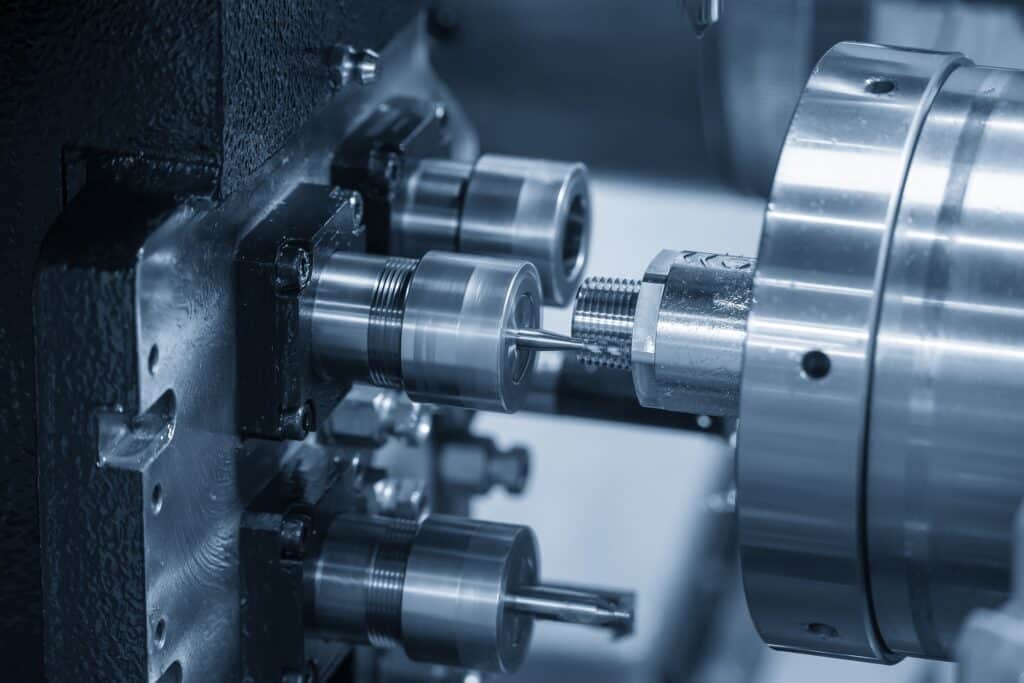In today's competitive manufacturing landscape, efficiency isn't just a goal; it's a prerequisite for success. Manufacturers continually seek ways to optimize their processes and maximize productivity. One technology that has emerged as a game-changer in precision manufacturing is Swiss machining. Renowned for its precision and efficiency, Swiss machining has become indispensable for manufacturers aiming to streamline their production processes. Let's explore the world of Swiss machining and provide valuable tips for manufacturers looking to maximize efficiency.
Understanding Swiss Machining
Before we delve into the tips, it's essential to understand what Swiss machining entails. Also known as Swiss turning or Swiss-type turning, this specialized form of CNC machining excels at producing small, intricate parts with tight tolerances.
At the heart of Swiss machining lies its unique design. Unlike traditional lathes, Swiss machines feature a sliding headstock and guide bushing that provide exceptional stability and control. This design enables high-speed machining with minimal vibration, resulting in superior surface finishes and dimensional accuracy.
Tip 1: Embrace Advanced Tooling
Investing in high-quality tooling is critical for maximizing efficiency with Swiss machining. Cutting-edge tools, such as carbide inserts, diamond-coated end mills, and ceramic drills, can significantly enhance performance and reduce machining times.
By leveraging advanced tooling tailored for Swiss machines, manufacturers can achieve faster cutting speeds, extended tool life, and superior surface finishes. Additionally, custom tooling solutions optimized for specific applications can further enhance productivity and quality.
Tip 2: Optimize Programming and Setup
Efficient programming and setup are essential for unlocking the full potential of Swiss machining. Leveraging sophisticated CAM software designed for Swiss machines can streamline programming workflows and minimize setup times.
Moreover, implementing standardized setup procedures and tooling layouts can help reduce changeover times between jobs, facilitating seamless transitions and uninterrupted production. Utilizing modular fixturing systems and quick-change tooling solutions can further expedite setup processes and enhance overall efficiency.
Tip 3: Implement Continuous Improvement Practices
Continuous improvement lies at the core of efficient manufacturing operations. By fostering a culture of innovation and collaboration, manufacturers can continually refine processes, identify areas for optimization, and implement improvements to drive productivity and quality.
Encouraging cross-functional teams to participate in problem-solving initiatives and kaizen events can yield valuable insights and innovative solutions. Additionally, conducting regular performance reviews and soliciting feedback from operators and technicians can help identify bottlenecks and opportunities for enhancement.
Tip 4: Leverage Automation and Robotics
Automation and robotics play a pivotal role in maximizing efficiency and productivity in Swiss machining. Integrating robotic loading and unloading systems can minimize manual labor and reduce cycle times, enabling machines to operate continuously with minimal downtime.
Furthermore, automated tool changers and in-process monitoring systems can enhance process reliability and consistency, ensuring optimal performance throughout the production cycle. Implementing lights-out manufacturing capabilities can further extend operational uptime and maximize throughput, particularly for high-volume production runs.
Tip 5: Invest in Training and Development
Investing in training and development for operators and technicians is essential for optimizing Swiss machining operations. Providing comprehensive training programs and hands-on workshops can empower personnel to operate machines more effectively, troubleshoot issues efficiently, and implement best practices to enhance performance.
Encouraging ongoing skill development and professional growth can foster a culture of excellence and innovation within the organization. Additionally, offering certification programs and career advancement opportunities can incentivize employees to continuously improve their skills and contribute to the success of the manufacturing operation.
Tip 6: Opt for Predictive Maintenance Strategies
Proactive maintenance strategies are critical for minimizing downtime and maximizing equipment uptime in Swiss machining. Adopting predictive maintenance techniques, such as vibration analysis, thermal imaging, and condition monitoring, can help identify potential equipment failures before they occur, allowing for timely intervention and preventive maintenance.
By leveraging real-time data and predictive analytics, manufacturers can optimize maintenance schedules, extend equipment lifespan, and reduce unplanned downtime. Additionally, implementing remote monitoring and diagnostic capabilities can enable proactive troubleshooting and remote support, further enhancing equipment reliability and operational efficiency.
Tip 7: Enhance Material Management Practices
Effective material management is essential for maximizing efficiency and minimizing waste in Swiss machining. Implementing lean principles, such as just-in-time inventory management and kanban systems, can help streamline material flow and reduce inventory carrying costs.
Furthermore, investing in advanced cutting fluids and lubricants can prolong tool life, improve surface finishes, and enhance chip evacuation, leading to higher productivity and lower production costs. Additionally, optimizing material handling processes and minimizing material handling time can further improve efficiency and throughput in Swiss machining operations.
Tip 8: Foster Supplier Partnerships
Collaborating closely with suppliers is key to maximizing efficiency in Swiss machining. Developing strong relationships with trusted suppliers can ensure a reliable supply of high-quality materials, tooling, and consumables, minimizing production disruptions and downtime.
Additionally, engaging suppliers early in the design and development process can lead to innovative solutions and cost-saving opportunities. By fostering open communication and collaboration with suppliers, manufacturers can leverage their expertise and resources to optimize manufacturing processes and drive continuous improvement.
Shamrock Precision Recommends Maximizing Efficiency with Swiss Machining
Swiss machining offers manufacturers a powerful solution for maximizing efficiency and staying competitive in today's dynamic marketplace. By embracing advanced tooling, optimizing programming and setup, implementing continuous improvement practices, leveraging automation and robotics, investing in training and development, adopting predictive maintenance strategies, enhancing material management practices, and fostering supplier partnerships, manufacturers can unlock the full potential of Swiss machining and achieve exceptional results.
At Shamrock Precision, we highly recommend manufacturers to explore the possibilities of Swiss machining and capitalize on its numerous benefits. With the right strategies, tools, and technologies in place, manufacturers can optimize their production processes, reduce lead times, and stay ahead of the competition in today's fast-paced manufacturing landscape.

